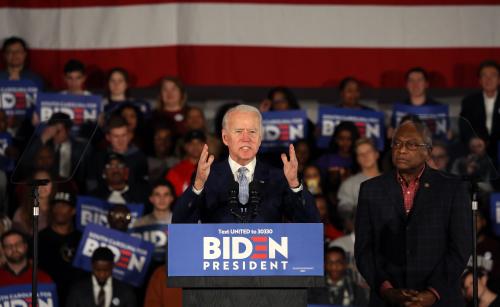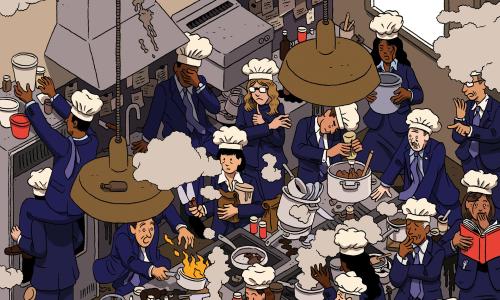The Republican Party is souring on experienced politicians. It is nominating and electing more and more congressional candidates who have not served in government. And experienced Republicans are more vulnerable than Democrats to challenges from populist outsiders.
As a result, the Republican and the Democratic parties are taking on not only different ideological casts but different characters, in ways that may make the GOP the more disruptive, volatile party for years to come.
Those are conclusions we reach after exploring data on how House candidates with and without prior office-holding experience fared in elections from 1990 to 2016, the most recent presidential election year. We hasten to say that we are not pioneers. The trends we found have been documented by other scholars, such as Sarah Treul and Rachel Porter in both an article and a research paper. We are especially grateful to Danielle Thomsen of the University of California, Irvine, who provided all of the data in this report.
Our dive into the data adds additional texture. It helps explain, we think, the increasingly insurgent, populist bent that the GOP was displaying well before Donald Trump’s arrival—and will likely continue to display after he has left the scene.
Politics is a difficult job, and experience matters. It does not ensure competence, and it can breed complacency and corruption, but knowing the ropes in government, building political capital, and learning to navigate political cross-currents take time. For that reason, both parties—their establishments and voters alike—have traditionally considered prior experience in office a plus when choosing candidates for Congress.
Still, there are lots of political newcomers entering House primaries. We find that 70% to 80% of primary candidates are what we will call inexperienced (or amateurs), meaning they lack prior experience in elective office. We contrast them with what we will call experienced candidates (or office-holders), candidates coming from other elective positions. (Thomsen uses Gary C. Jacobson’s measure of candidate quality, indicating whether the candidate has ever held elective public office of any kind.) Over time, there has not been much change in the supply of newcomers in either party
But the demand for newcomers has been higher, in general, among Republicans than Democrats. As Figure 1 shows, amateurs have generally fared better against experienced candidates in Republican primaries than in Democratic primaries, especially during the period of the Republican revolution that swept the House into Republican hands in 1994. And in 2016, with a populist newcomer at the top of the ticket, Republican amateurs fared extraordinarily well, beating experienced nonincumbents in more than half of the primaries where they squared off.
Figure 1
The parties’ differential receptivity to amateurs flowed through to general elections (where, of course, the candidate pool reflects the results of the primaries). Figure 2 shows the number of Democratic newcomers to the House, including the shares with and without prior political experience. Except in 2006, a wave year for Democrats, office-holders commandingly dominate the Democratic freshman class. Democratic House leaders have been working with a steadily replenished supply of members with political chops.
Figure 2
Figure 3 shows Republican newcomers to the House. The Republican wave elections of 1994 and 2010 are very evident, bringing masses of new faces. Just as significant, Republicans almost always elected more amateurs than Democrats did, both in absolute numbers and as a proportion of each year’s freshman class.
Figure 3
Republicans’ predilection for amateurs grew especially pronounced the 2010s, when almost as many Republican freshmen were amateurs as office-holders; and in 2016, more than half of the GOP freshman class was inexperienced. Republican leaders thus found themselves working with a steady inflow of outsiders.
Political scientists have observed a growing gap in the characters of the two parties. The Democrats look more like a traditional coalitional party, promoting talent through its ranks and assembling support from its constellation of interest and identity groups. Republicans look more like an insurgent movement (as our Brookings colleague Thomas E. Mann and the American Enterprise Institute’s Norman J. Ornstein argue), or an ideological movement (per Matt Grossman and David A. Hopkins), or elements of both. The data we present—typical of a variety of indicia we looked at—support their case. Among Republicans, both the supply of insurgent candidates and the demand for them is high and growing.
It is important to note that, in this century, insurgency has become a more common phenomenon in both parties. After spiking in the early 1990s, that rate was comparatively low, under 30 percent. But it soared in the most recent decade, to the point where half of House incumbents faced a primary challenge.
Primaries are now a major political pressure point for insurgents and activists, who are more ideological and extreme than the public as a whole. Most incumbents win their primaries, but the mere threat of being “primaried” can make legislators wary of casting votes or accepting compromises that might anger activists. “Members…work to avoid acting in ways that could lead advocacy groups to oppose them in the future,” write our Brookings colleague Elaine C. Kamarck and the R Street Institute’s James Wallner. Both parties have lost some of their ability to protect loyal legislators who may be willing, as it were, to take one for the team.
Within that general trend, however, the parties are again drifting apart. Figure 4 shows the likelihood that an incumbent in a battleground district—an incumbent where the margin in the most recent presidential race was 60-40 or closer—will face a primary challenge. These are the districts where party gatekeeping in primary matters most, because primary challenges could well cost the party the seat in the general election.
Figure 4
As the chart shows, in recent years Republicans have had much more difficulty than Democrats in preventing challenges to incumbents in battleground districts, and the gap has grown over time. In other words, Republicans have lost much of their ability to ward off primary bids by insurgents and outsiders in these key races. That may be because conservative activists have grown more extreme and insurgent, or because the party establishments have weakened, or, as we suspect, both.
Either way, the story all these data seem to tell is that a source of today’s polarization is the Republican Party’s base. Recent research by Ray La Raja and Zachary Albert likewise suggests that the Republican base is less willing to play ball with its party establishment than is the Democratic base.
All of which suggests that the Republican Party is growing more unruly and disruptive—harder to govern, and harder to govern with.
This work is licensed under the Creative Commons Attribution-NonCommerical-NoDerivatives 4.0 International License. To view a copy of the license, visit https://creativecommons.org/licenses/by-nc-nd/4.0/.
The Brookings Institution is committed to quality, independence, and impact.
We are supported by a diverse array of funders. In line with our values and policies, each Brookings publication represents the sole views of its author(s).











Commentary
How inexperienced candidates and primary challenges are making Republicans the protest party
June 29, 2020